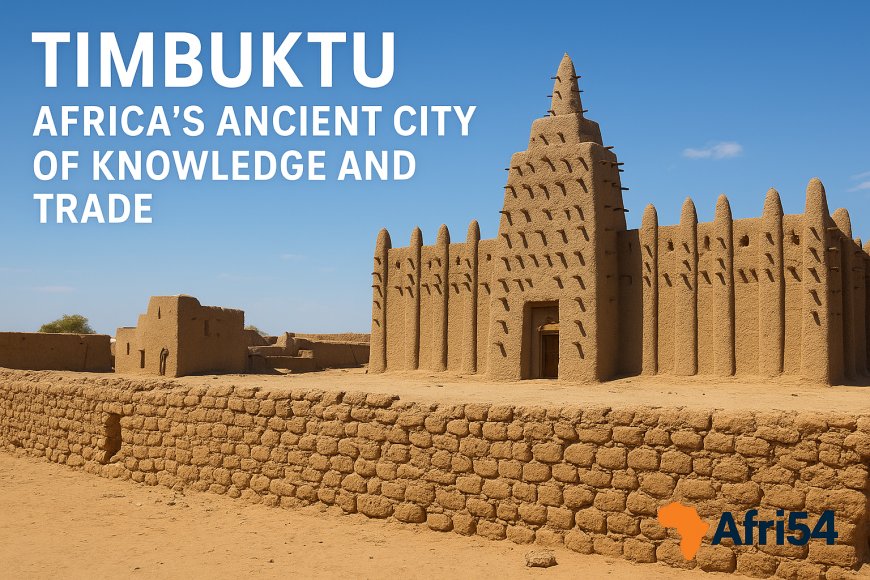Timbuktu: Africa’s Ancient City of Knowledge and Trade
Discover the story of Timbuktu, the ancient city of Mali once famed as a global hub of Islamic scholarship, manuscripts, and trans-Saharan trade. Explore its legacy as Africa’s center of learning.

Reading Time: ~6 minutes
Few names in African history carry as much mystique as Timbuktu. Once dismissed in popular culture as a mythical far-off place, the city was, in fact, one of the most important centers of learning, trade, and culture in the medieval world. Located in present-day Mali, Timbuktu flourished between the 13th and 16th centuries as a hub of Islamic scholarship and a thriving marketplace that connected Africa with the Middle East and beyond.
The Rise of Timbuktu
Founded in the 12th century by Tuareg nomads, Timbuktu quickly grew into a strategic settlement on the edge of the Sahara Desert. Its location made it an essential stop for trans-Saharan caravans transporting salt, gold, ivory, and slaves. By the 14th century, under the Mali Empire, Timbuktu rose to prominence as a bustling trade hub and intellectual capital.
The Golden Age of Scholarship
Timbuktu became synonymous with knowledge and learning. During its golden era, the city was home to numerous madrasas (Islamic schools) and universities, the most famous being Sankore University. Thousands of scholars, poets, scientists, and jurists studied here, making Timbuktu a magnet for intellectuals from across Africa and the Islamic world.
At its peak, the city boasted an astonishing 700,000 manuscripts covering subjects such as astronomy, medicine, mathematics, law, and theology. Many of these documents survive today in private libraries and archives, forming part of Africa’s richest written heritage.
A Marketplace of Cultures
Beyond scholarship, Timbuktu was a melting pot of trade and culture. Gold from West Africa passed through its markets, while salt from the Sahara was equally valuable and essential for preservation. Its traders dealt in goods from as far away as Europe, Arabia, and India, connecting Timbuktu to global networks long before modern globalization.
Decline and Challenges
By the late 16th century, Timbuktu began to decline. The Moroccan invasion of 1591 weakened the city, and shifts in global trade routes further eroded its significance. Despite this, its scholarly legacy endured, preserved through manuscripts and oral traditions that testify to its once-great influence.
Timbuktu Today
Now recognized as a UNESCO World Heritage Site, Timbuktu continues to attract global attention. Efforts are ongoing to preserve its ancient manuscripts and mosques, such as the Sankore, Djinguereber, and Sidi Yahya mosques, which remain standing as symbols of its illustrious past.
Why Timbuktu Matters
Timbuktu is not just a city of ruins or old libraries. It is a reminder of Africa’s intellectual brilliance and historical contribution to global civilization. At a time when Europe was still emerging from the Middle Ages, Timbuktu shone as a beacon of knowledge, culture, and prosperity.
Final Thoughts
To walk through Timbuktu is to step into a world where scholarship and commerce intertwined, creating one of history’s greatest centers of learning. It remains a powerful emblem of Africa’s rich heritage — a city that proves knowledge is as valuable as gold.
Have you listed your business on Afri54?
Afri54 exists to solve a fundamental challenge faced by millions of African businesses: lack of visibility. Whether you’re an automobile part seller in Lagos, a local attire manufacturer in Kigali, a coffee exporter in Addis Ababa, or a mobile phone supplier in Accra, you deserve to be seen. Join Now


















